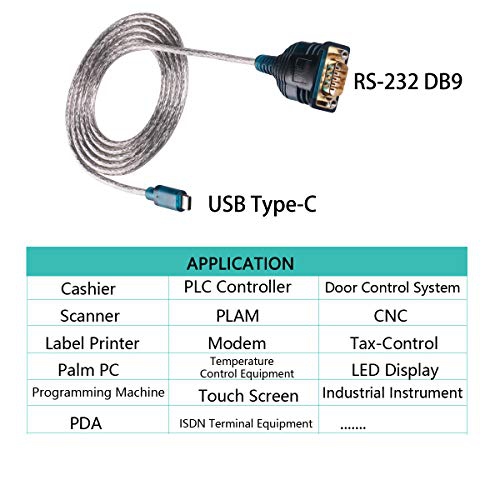C&E USB Devices Driver Download
C programming is a general-purpose, procedural, imperative computer programming language developed in 1972 by Dennis M. Ritchie at the Bell Telephone Laboratories to develop the UNIX operating system. C is the most widely used computer language. It keeps fluctuating at number one scale of popularity along with Java programming language, which is also equally popular and most widely used among modern software programmers. The null coalescing operator (called the Logical Defined-Or operator in Perl) is a binary operator that is part of the syntax for a basic conditional expression in several programming languages, including C#, PowerShell as of version 7.0.0, Perl as of version 5.10, Swift, and PHP 7.0.0. For the purposes of these tables, a, b, and c represent valid values (literals, values from variables, or return value), object names, or lvalues, as appropriate.R, S and T stand for any type(s), and K for a class type or enumerated type. Arithmetic operators. All arithmetic operators exists in C and C and can be overloaded in C. Discover historical prices for C stock on Yahoo Finance. View daily, weekly or monthly format back to when Citigroup, Inc. Stock was issued. Following table shows all the logical operators supported by C language. Assume variable A holds 1 and variable B holds 0, then − && Called Logical AND operator. If both the operands are non-zero, then the condition becomes true. (A && B) is false. Called Logical OR Operator. If any of the two.
C or Do is the first note of the C majorscale, the third note of the A minor scale (the relative minor of C major), and the fourth note (F, A, B, C) of the Guidonian hand, commonly pitched around 261.63 Hz. The actual frequency has depended on historical pitch standards, and for transposing instruments a distinction is made between written and sounding or concert pitch.
In English the term Do is used interchangeably with C only by adherents of fixed-Do solfège; in the movable Do system Do refers to the tonic of the prevailing key.


Frequency[edit]
Historically, concert pitch has varied. For an instrument in equal temperament tuned to the A440 pitch standard widely adopted in 1939, middle C has a frequency around 261.63 Hz (for other notes see piano key frequencies). Scientific pitch was originally proposed in 1713 by French physicist Joseph Sauveur and based on the numerically convenient frequency of 256 Hz for middle C, all C's being powers of two. After the A440 pitch standard was adopted by musicians, the Acoustical Society of America published new frequency tables for scientific use. A movement to restore the older A435 standard has used the banners 'Verdi tuning', 'philosophical pitch' or the easily confused scientific pitch.
Octave nomenclature[edit]
Middle C[edit]
Middle C (the fourth C key from left on a standard 88-key piano keyboard) is designated C4 in scientific pitch notation, and c′ in Helmholtz pitch notation; it is note number 60 in MIDI notation.[1]
While the expression Middle C is generally clear across instruments and clefs, some musicians naturally use the term to refer to the C note in the middle of their specific instrument's range. C4 may be called Low C by someone playing a Western concert flute, which has a higher and narrower playing range than the piano, while C5 (523.251 Hz) would be Middle C. This technically inaccurate practice has led some pedagogues to encourage standardizing on C4 as the definitive Middle C in instructional materials across all instruments.[2]
On the Grand Staff, middle-C is notated with a ledger line above the top line of the bass staff or below the bottom line of the treble staff. Alternatively, it is written on the centre line of a staff using the alto clef, or on the fourth line from the bottom, or the second line from the top, of staves using the tenor clef.
Other octaves[edit]
In vocal music, the term High C (sometimes less ambiguously called Top C[3]) can refer to either the soprano's C6 (1046.502 Hz; c′′′ in Helmholtz notation) or the tenor's C5; both are written as the C two ledger lines above the treble clef but the tenor voice sings an octave lower. The term Low C is sometimes used in vocal music to refer to C2 because this is considered the divide between true basses and bass-baritones: a basso can sing this note easily, whereas other male voices, including bass-baritones, typically cannot.
Tenor C is an organ builder's term for small C or C3 (130.813 Hz), the note one octave below Middle C. In stoplists it usually means that a rank is not full compass, omitting the bottom octave.
Designation by octave[edit]
| Scientific designation | Helmholtz designation | Octave name | Frequency (Hz) | Other names | Audio |
|---|---|---|---|---|---|
| C−1 | C͵͵͵ or ͵͵͵C or CCCC | Octocontra | 8.176 | Play | |
| C0 | C͵͵ or ͵͵C or CCC | Subcontra | 16.352 | Play | |
| C1 | C͵ or ͵C or CC | Contra | 32.703 | Play | |
| C2 | C | Great | 65.406 | Low C, cello C, 8' C (see organ pipe length) | Play |
| C3 | c | Small | 130.813 | 4' C or tenor C (organ), viola C | Play |
| C4 | c′ | One-lined | 261.626 | Middle C | Play |
| C5 | c′′ | Two-lined | 523.251 | Treble C, high C (written an octave higher for tenor voices)[4] | Play |
| C6 | c′′′ | Three-lined | 1046.502 | High C (soprano) | Play |
| C7 | c′′′′ | Four-lined | 2093.005 | Double high C[citation needed] | Play |
| C8 | c′′′′′ | Five-lined | 4186.009 | Eighth octave C, triple high C | Play |
| C9 | c′′′′′′ | Six-lined | 8372.018 | Quadruple high C | Play |
| C10 | c′′′′′′′ | Seven-lined | 16744.036 | Quintuple high C | Play |
Note that for a classical piano and musical theory, the middle C is usually labelled as C4; However, in the MIDI standard definition (like the one used in Apple's GarageBand), this middle C (261.626 Hz) is labelled C3. In practice, a MIDI software can label middle C (261.626 Hz) as C3-C5, which can cause confusion, especially for beginners.

Graphic presentation[edit]
C&e Usb Devices Driver Download Windows 8
Scales[edit]
Common scales beginning on C[edit]
- C Major: C D E F G A B C
- C Natural Minor: C D E♭ F G A♭ B♭ C
- C Harmonic Minor: C D E♭ F G A♭ B C
- C Melodic Minor Ascending: C D E♭ F G A B C
- C Melodic Minor Descending: C B♭ A♭ G F E♭ D C
Diatonic scales[edit]

- C Ionian: C D E F G A B C
- C Dorian: C D E♭ F G A B♭ C
- C Phrygian: C D♭ E♭ F G A♭ B♭ C
- C Lydian: C D E F♯ G A B C
- C Mixolydian: C D E F G A B♭ C
- C Aeolian: C D E♭ F G A♭ B♭ C
- C Locrian: C D♭ E♭ F G♭ A♭ B♭ C
Jazz melodic minor[edit]
- C Ascending Melodic Minor: C D E♭ F G A B C
- C Dorian ♭2: C D♭ E♭ F G A B♭ C
- C Lydian Augmented: C D E F♯ G♯ A B C
- C Lydian Dominant: C D E F♯ G A B♭ C
- C Mixolydian ♭6: C D E F G A♭ B♭ C
- C Locrian ♮2: C D E♭ F G♭ A♭ B♭ C
- C Altered: C D♭ E♭ F♭ G♭ A♭ B♭ C
See also[edit]
References[edit]
- ^'MIDI Note/Key Number Chart', computermusicresource.com
- ^Large, John (February 1981). 'Theory in Practice: Building a Firm Foundation'. Music Educators Journal. 32: 30–35.
- ^Harold C. Schonberg (November 4, 1979). 'Birgit Nilsson – The Return of a Super-Soprano'. The New York Times.
- ^'The Note That Makes Us Weep' by Daniel J. Wakin, The New York Times, September 9, 2007
- C Programming Tutorial
- C Programming useful Resources
- Selected Reading
The following table lists the Bitwise operators supported by C. Assume variable 'A' holds 60 and variable 'B' holds 13, then −
C-diff

| Operator | Description | Example |
|---|---|---|
| & | Binary AND Operator copies a bit to the result if it exists in both operands. | (A & B) = 12, i.e., 0000 1100 |
| | | Binary OR Operator copies a bit if it exists in either operand. | (A | B) = 61, i.e., 0011 1101 |
| ^ | Binary XOR Operator copies the bit if it is set in one operand but not both. | (A ^ B) = 49, i.e., 0011 0001 |
| ~ | Binary One's Complement Operator is unary and has the effect of 'flipping' bits. | (~A ) = ~(60), i.e,. 1100 0011 |
| << | Binary Left Shift Operator. The left operands value is moved left by the number of bits specified by the right operand. | A << 2 = 240 i.e., 1111 0000 |
| >> | Binary Right Shift Operator. The left operands value is moved right by the number of bits specified by the right operand. | A >> 2 = 15 i.e., 0000 1111 |
Example
C-reactive Protein
Try the following example to understand all the bitwise operators available in C −
C&e Usb Devices Driver Downloads
When you compile and execute the above program, it produces the following result −
